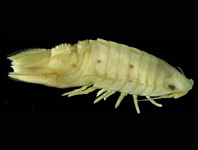Abstract
Three new species of Lasianobia Hampson, 1905 are described from China: Lasianobia dvoraki Saldaitis, Volynkin & Truuverk, sp. nov. (W Sichuan), Lasianobia labranga Saldaitis, Volynkin & Truuverk, sp. nov. (SW Gansu) and Lasianobia qinghana Saldaitis, Volynkin & Truuverk, sp. nov. (Qinghai). Adults and male genitalia of these new species and their relatives are illustrated, and a generic check list presented.
References
Alphéraky, S. (1892) Lepidoptera nova a Gr. Grshimailo un Asia Centrali novissime lecta. Horae Societatis Entomologicae Rossicae, 26, 444–459.
Boursin, Ch. (1964) Noctuidae Trifinae. Zweiter Beitrag zur Kenntnis der Fauna der Noctuidae von Nepal. Veröffentlichungen der Zoologischen Staatssammlung München, 8, 3–40. [in German]
Caterino, M.S. & Sperling, F.A.H. (1999) Papilio phylogeny based on mitochondrial cytochrome oxidase I and II genes. Molecular Phylogenetics and Evolution, 11, 122–137.
https://doi.org/10.1006/mpev.1998.0549Chen, Y.X. (1982) Lepidoptera: Noctuidae, Agaristidae & Cossidae. In: Chen, Z.X. (Ed.) Insects of Xizang. Vol. 2. Science Press, Beijing, pp. 61–96.
Draudt, M. (1950) Beiträge zur Kenntnis der Agrotiden-Fauna Chinas aus den Ausbeuten Dr. H. Höne's. Mitteilungen der Münchener Entomologischen Gesellschaft, 40 (1), 1–174. [in German]
Gyulai, P., Ronkay, L. & Saldaitis, A. (2011) New Noctuidae species from China and the Himalayas (Lepidoptera, Noctuidae). Esperiana, 16, 166–197.
Hacker, H. Kautt, P. & Weisz, V. ([1997] 1996) Noctuidae gesammelt von Kautt und Weisz im Sommer 1994 in Spiti Valley in Himachal Pradesh. Esperiana, 4, 395–417. [in German]
Hall, T.A. (1999) BioEdit: a user-friendly biological sequence alignment editor and analysis program for Windows 95/98/NT. Nucleic Acids Symposium Series, 41, 95–98.
Hampson, G.F. (1905) Catalogue of the Lepidoptera Phalaenae in the British Museum. Vol. 5. London, Taylor & Francis, 634 pp., pls. 78–95.
Hreblay, M., Ronkay, L. & Plante, J. (1998) Contribution to the Noctuidae (Lepidoptera) fauna of Tibet and the adjacent regions (II). A systematic surway of the Tibetan Noctuidae fauna based on the material of the Schäfer-expedition (1938–1939) and recent expeditions (1993–1997) (Lepidoptera: Noctuidae). Esperiana, 6, 69–184.
Kearse, M., Moir, R., Wilson, A., Stones-Havas, S., Cheung, M., Sturrock, S., Buxton, S., Cooper, A., Markowitz, S., Duran, C., Thierer, T., Ashton, B., Mentjies, P. & Drummond, A. (2012) Geneious Basic: an integrated and extendable desktop software platform for the organization and analysis of sequence data. Bioinformatics, 28 (12), 1647–1649.
https://doi.org/10.1093/bioinformatics/bts199Kimura, M (1980) A simple method for estimating evolutionary rate of base substitutions through comparative studies of nucleotide sequences. Journal of Molecular Evolution, 16, 111–120.
https://doi.org/10.1007/BF01731581Kononenko, V.S. (1996) A review of the genus Hadulipolia Boursin, 1964 with description of a new species and a new subspecies (Lepidoptera, Noctuidae, Hadeninae). Tinea, 14 (4), 271–278.
Kumar, S., Stecher, G. & Tamura K. (2016) MEGA7: Molecular Evolutionary Genetics Analysis version 7.0 for bigger datasets. Molecular Biology and Evolution, 33, 1870–1874.
https://doi.org/10.1093/molbev/msw054Lafontaine, J.D. (2004) Noctuoidea, Noctuidae (part), Noctuinae (part—Agrotini). In: Hodges, R.W. (Ed.), The Moths of North America. Fascicle 27.1. The Wedge Entomological Research Foundation, Washington, 394 pp.
Õunap, E., Viidalepp, J. & Saarma, U. (2005) Phylogenetic evaluation of the taxonomic status of Timandra griseata and T. comae (Lepidoptera: Geometridae: Sterrhinae). European Journal of Entomology, 102, 607–615.
https://doi.org/10.14411/eje.2005.085Õunap, E., Viidalepp, J. & Saarma, U. (2008) Systematic position of Lythriini revised: transferred from Larentiinae to Sterrhinae (Lepidoptera, Geometridae). Zoologica Scripta, 37, 405–413.
https://doi.org/10.1111/j.1463-6409.2008.00327.xÕunap, E., Viidalepp, J. & Truuverk, A. (2016) Phylogeny of the subfamily Larentiinae (Lepidoptera: Geometridae): integrating molecular data and traditional classifications. Systematic Entomology, 41 (4), 824–843.
https://doi.org/10.1111/syen.12195Püngeler, R. ([1900] 1899). Neue Macrolepidopteren aus Central-Asien. Deutsche entomologische Zeitschrift Iris, 12, 95–106, 288–299. [in German]
Püngeler, R. (1900) Neue Macrolepidopteren aus Centralasien. Deutsche entomologische Zeitschrift Iris, 13, 115–123. [in German]
Püngeler, R. (1908) Neue palaearctischen Macrolepidopteren. Deutsche entomologische Zeitschrift Iris, 21, 286–303. [in German]
Ronkay, L. & Gyulai, P. (2006) New Noctuidae (Lepidoptera) species from Iran and Tibet. Esperiana, 12, 211–241.
Saldaitis, A., Floriani, A., Ivinskis, P. & Babics, J. (2013) A new species of Lasianobia Hampson, 1905 (Lepidoptera, Noctuinae) from China. Zootaxa, 3646 (1), 082–086.
http://dx.doi.org/10.11646/zootaxa.3646.1.7Staudinger, O. (1895) Beschreibungen neuer Lepidopteren aus Tibet. Deutsche entomologische Zeitschrift Iris, 8, 300–343. [in German]
Tams, W.H.T. (1929) Descriptions of two new species of Lepidoptera Heterocera. The Entomologist, 62, 252–254.
Thompson, J.D., Higgins, D.G. & Gibson, T.J. (1994) ClustalW: improving the sensitivity of progressive multiple sequence alignment through sequence weighting, position specific gap penalties and weight matrix choice. Nucleic Acids Research, 22, 4673–4680.
https://doi.org/10.1093/nar/22.22.4673

